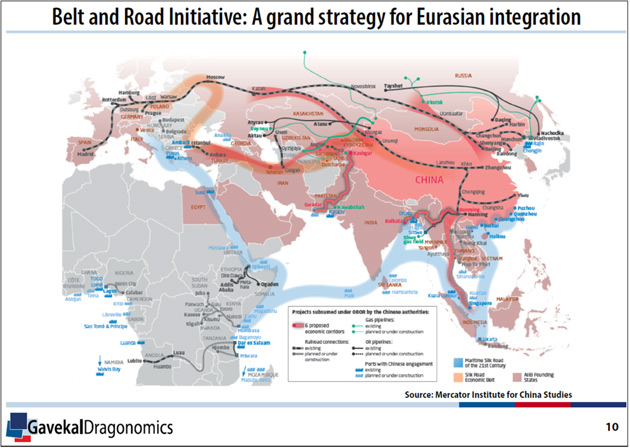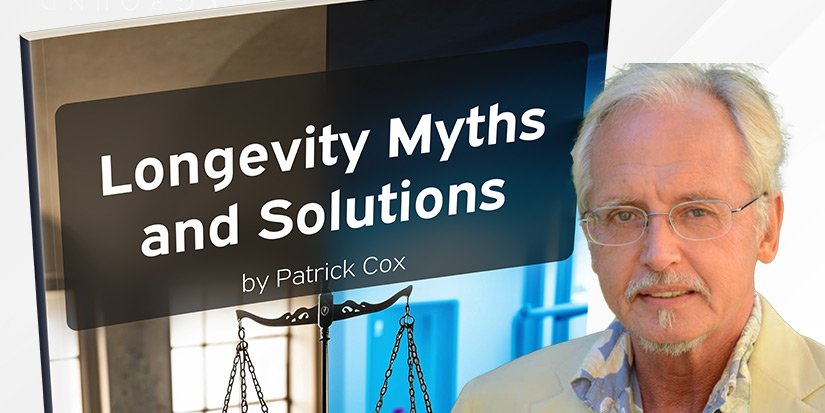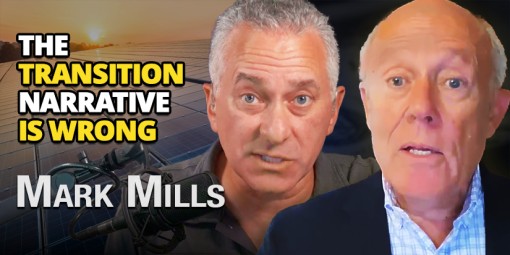China Plays It Cool
-
 John Mauldin
John Mauldin
- |
- April 20, 2018
- |
- Comments
- |
- View PDF
Central Control
Two Cards to Play
Grand Struggle
A Tale of Trade History
Fort Lauderdale, Reykjavik(!), New York, Chicago, Orange County, and Raleigh
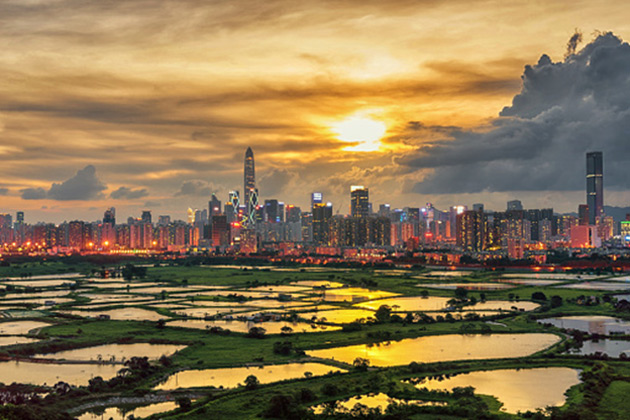
Photo: Getty Images
China is the world economy’s elephant in the room. We can’t possibly ignore it, yet many try anyway. Admitting China’s influence forces us to admit the world is changing—and we all must change with it.
This year, China is in the headlines because President Trump wants better trade terms. That’s important, but it’s only one piece of a much larger Chinese story that has been unfolding slowly for decades. Periodically, I check in on the latest developments. Today, we’ll see where we are, with the help of my trusted sources.
First, I hope you saw the announcement we are ending Outside the Box after next week. This is one step in the ongoing reorganization of my research efforts. I greatly enjoyed sending you those mid-week stories and I know you liked them, too. Rest assured, we will soon offer something even better. I have more info in a short video you can watch here.
Central Control
One of the great pleasures of my life is reading Gavekal’s outstanding economic research. I can do this thanks only to a long friendship with the firm’s three founders: Charles Gave, Louis Gave, and Anatole Kaletsky. Otherwise, it’s available only to their clients, and the cost is beyond my normal research budget.
One thing I appreciate about the Gavekal analysts and writers is that they are all independent and free to disagree with each other. Even the founders Charles, Louis, and Anatole often differ significantly—both in public and private messages that I get to read. Frankly, that is often when I learn the most.
Last week, Arthur Kroeber of Gavekal Dragonomics sent around a fascinating presentation about US-China strategic rivalry. It broadly matches my own thinking, but also gave me some “a-ha” moments. This is how I learn, by the way. My mind is a big blender into which I toss info from multiple sources. It whirs and rearranges the ingredients into something new, such as the following thoughts on China. They’re a mix of me, Gavekal, and my many other China contacts (I must hat tip Leland Miller and the China Beige Book). I should point out that any wrong conclusions are my own and should not be blamed on my sources. I am perfectly capable of making my own mistakes, thank you very much…
The first point to recognize: Xi Jinping is firmly in charge. You probably heard about the constitutional amendment that makes him effectively president for life. It doesn’t mean Xi is invulnerable or can do whatever he wants. He has constraints, as all national leaders do. But he doesn’t have to worry about reelection, or rivals trying to shift the agenda, or getting congress to approve his policies and budgets. Xi sets the agenda. Everyone else follows it.
I pointed out about two years into Xi’s presidency that it was clear that he was the most important Chinese leader since Deng Xiaoping. That is no longer the case. He is the most important figure in modern Chinese history since Mao and possibly Sun Yat-sen. From my viewpoint, Mao was a disaster for the Chinese people. Millions died under his disastrous economic policies. Since Deng and subsequent Chinese leadership and continuing with Xi, there has been a remarkable turnaround.
Yes, much of China still lives in deep poverty, but the fact that it moved 250 million+ people from subsistence farming into urban middle-class lifestyles, in less than two generations, is an unprecedented economic miracle. The breathtaking picture at the top of this letter is of Shenzhen, whose population went from 30,000 in 1979 to now 10,000,000+. Sixteen Chinese cities have a population over ten million. These are staggering growth stories most Westerners have never heard. The US has only two metro areas of comparable size.
Say what you will, historians will look back 100 years from now and marvel. And Xi seems determined to make life better for those still in poverty.
Arthur pointed out another, less noticed constitutional change that may help. It extended party discipline down to local officials, for both what they do and what they might fail to do. This gives Beijing a more effective enforcement mechanism and should result in more consistent policies.
My first thought on this was that even more centralized control may not be such a wonderful thing for China. It hasn’t worked so well elsewhere. Arthur agrees China could face problems down the road, but for the next few years thinks the new measures will be a net positive. He expects 6.5% GDP growth this year, as does Beijing (which of course gets what it wants). Last year’s shadow banking crackdown has somewhat contained excess leverage, at least for now.
China’s rapidly growing debt, both private and state-sponsored, is going to be a problem at some point. Xi and the leadership are trying to head off the problem, but debt has its own reality. Increasingly easy access to credit makes it hard to control. Chinese “investors” load up on debt to invest in “sure things” only to find them not so sure.
For now, though, short-term stability gives Xi room to focus on long-term economic priorities, of which he has two: The “Made in China 2025” industrial policy and the “Belt and Road” infrastructure initiative. As we’ll see in a minute, both are much more than they seem.
Meanwhile, the US sees China as both partner and rival. Obviously the two economies are intertwined and depend on each other. President Trump observes, correctly, that China doesn’t always reciprocate the trading rights that the US and other governments extend. China is really quite protectionist—far more so than the other “BRIC” countries, as measured on the OECD foreign direct investment restrictiveness index. Trump is right to press for better trade parity. When China can ship cars to the US for 2.5% tariff, and US cars must pay a 25% to go into China, something is out of balance. There are literally scores of examples like that. And for this, we let them into the WTO and gave China most-favored nation status? (More on that below.)
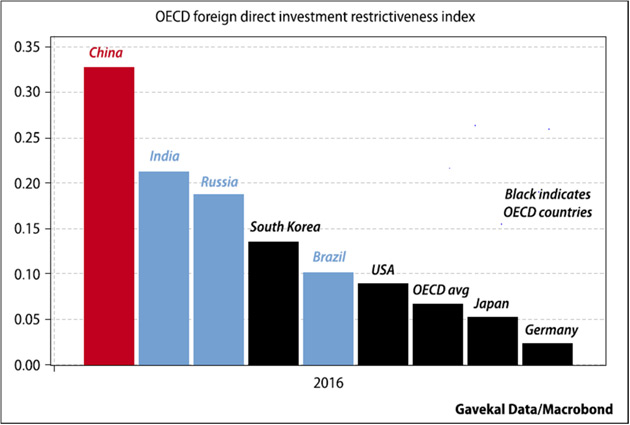
But at its heart, the US-China rivalry is not really a trade war. This has been unfolding for a long time. Trump’s tariff threats are only the latest move and won’t be the last.
Two Cards at Play
Like what you're reading?
Get this free newsletter in your inbox every Saturday! Read our privacy policy here.
Beijing has two big economic programs, neither of which it considers negotiable. They are strategic priorities the rest of the world will have to face.
Made in China 2025 is a broad industrial policy with multiple goals:
- Improve manufacturing productivity
- Build up technology-intensive sectors
- Gain 70% self-sufficiency in key materials and components
On the surface, there is really nothing wrong with this policy. Many nations have long done similar, including the United States. But let’s get beyond the surface.
The government, state-owned enterprises and private businesses are all giving Made in China 2025 truly massive funding. Research & development spending was US$232 billion in 2016 alone. Ominously, a new government commission, founded just last year, is overseeing the “integration” of this technology development with possible military use. And let’s make no mistake, this “funding,” whether equity, loans, or grants, ultimately comes from the state or at the urging of the state.
Note that last goal of 70% self-sufficiency in certain markets. Made in China 2025 is, by its nature, an anti-trade program. Favoring domestic producers necessarily disfavors importers. Other governments, including the US, do the same, of course, but rarely on this rather immense scale. So, it’s inevitably going to be a point of argument.
China’s Belt & Road Initiative looks like a giant infrastructure program, and it is, but that’s not all. It is Xi’s mercantilist version of the US-led postwar Marshall Program. Where we carved out leadership via institutions and trade agreements, while at the same time supplying much-needed money, China seeks to do the same by physically connecting itself with the Eurasian continent. I have said from the beginning that this may be one of Xi’s most profoundly disruptive and transformative policies of his career. There was some skepticism when it was first announced as the scope was so massive, but I think everyone is now a true believer. China is committing to putting its hard dollars into completing this project’s multi-decade vision.
As my friend George Friedman often says, China’s main strategic challenge is that the US controls the seas. Geography means China’s imports and exports must traverse coastal bottlenecks the US could easily close if it wished. That’s intolerable if your goal is to be a superpower, and that’s definitely what Xi wants.
One Belt, One Road is the answer. It will link the Eurasian land mass into a giant trading bloc with Europe at one end and China at the other. The project will open land routes the US cannot interdict, thereby letting China take what it feels is its rightful place of leadership. The scope is breathtaking, but Beijing is determined to make it happen. Again, I would not bet against Xi on this.
Notice all the smaller Asian countries that the One Road goes through. It will give you access to not only East Asia but Europe as well. China is building a “main pipeline” not unlike Eisenhower’s interstate highway system. And that means all those little countries will access that main road. Ultimately, China wants to pay for all the products it buys in Renminbi and have those small countries make it part of their central bank holdings. That is part of the process of becoming a reserve currency, which is something China covets. The same thing is true for the project’s ocean and seaport aspects.
Whatever your feelings about Chinese leadership, you have to admire a country that can undertake such a huge project that will take decades to fulfill. While Xi and his team may be starting it, it is unlikely anyone currently on top will still be on top in 30 years. That is Vision with a capital V.
Grand Struggle
This world Beijing envisions is incompatible with Washington’s priorities. Hence the present clash of titans. US leaders are figuring out China is not going to give them what they want. Why that surprises them, I’m not quite sure. China is ruled by the Communist Party. It’s different than Soviet communism or the various socialist groups in the West. It’s vastly different from Maoist communism. It looks like capitalism in some respects, but it is more about mercantilism and empire-building. This idea that China would slowly transition to American-style free enterprise was always fantasy. I think that’s now dawning on people.
That’s not to say we can’t do business with China, just as we do with Russia and other geopolitical opponents. We can and will continue—but it’s their country and we will do it on mutually agreed terms or not at all. Arthur Kroeber said in the Gavekal presentation we can either “co-exist or conflict.” I think that sums it up well. The problem is getting people on our side to accept it.
So, there is right now a grand struggle in Washington to redefine how we interact with China. Multiple wings are jockeying for position. For the moment, President Trump is the most important player. Despite some of his rhetoric, I don’t believe he is ideologically against trade. I think he just wants a US “win” and is flexible on what that means.
Trade ideologues do exist, though. Steve Bannon and Peter Navarro are two top examples, and Navarro still (unfortunately) has the president’s ear. They also want a “win” but have much different ideas on what it should look like. The US would be much the poorer if their vision won. Some of their ideas are complete non-starters to Beijing but, being ideologues, they are not inclined to compromise. Nor is China, so I don’t expect much movement. There are areas in which I believe that China will compromise (like auto tariffs, etc.), but becoming a US vassal state is not in the cards. And shouldn’t be.
Then you have national security hawks, who don’t mind doing business with China as long as we stay dominant in security matters. I think Defense Secretary James Mattis is in this group. He’d like China’s help in solving the North Korea problem and probably knows the US must give something in return. He advised caution on the recent steel and aluminum tariffs, for instance. The problem is where to stop. Doing business with China necessarily gives China access to Western technology, data, and capital. So, it’s very hard to have it both ways.
Finally, you have US companies. They see a huge market in China and they want access to it. Beijing is glad to welcome them, for the right price, which usually entails sharing software code and other intellectual property. They don’t like this, but most have made peace with it. We know this because we see them setting up operations in China. They’d like the US government to extricate them from that bargain but can’t say so too loudly. They’re in a tough spot.
Like what you're reading?
Get this free newsletter in your inbox every Saturday! Read our privacy policy here.
There being no agreed-upon plan, the US side is more or less flailing against China, whose leadership is 100% unified because that is what Xi has dictated. This side has the president threatening tariffs, business allies like my friend Larry Kudlow saying everyone should calm down, Treasury Department and CFIUS trying to stop technology deals, the Pentagon quietly working with China to contain North Korea, and large businesses doing whatever it takes to stay on Beijing’s good side—all at the same time.
China looks at this mess, frankly, and sees its best strategy is to play it cool, try to look generous and wait. The longer we argue, the more time China has to acquire our technology and convert it to their own use. Combine that with their own research, which is progressing rapidly in certain segments (especially artificial intelligence!), and they have a plausible route to superiority in some areas, or at least parity.
I don’t believe we will see any sort of grand deal that sweeps away all this clutter. If Trump and Xi reach some agreement on tariffs, other issues will remain. Lately, China is “magnanimously” offering to allow foreign companies more ownership of local assets. That sounds great, but it is not clear to me that Beijing and US businesses share the same concept of “ownership.” As I said, they’re communists, autocrats, and even more importantly, mercantilists.
And even if you solve all that, the much larger geopolitical rivalry remains. It would be nice to think that China can be our trans-pacific ally like the United Kingdom is in the Atlantic. I don’t see that happening. We don’t have the same kind of cultural and geographic ties with China.
The current situation vis-à-vis China and the US could go many directions. In the worst case, we could slide into a kind of economic Cold War with China, with both sides deploying aggressively protectionist policies. I am afraid that would spark a global recession. I am not being hyperbolic. It is a dark alley we do not want to walk into.
More optimistically, Beijing might grant enough concessions to satisfy Trump and buy a few more years of relative harmony. But as I said, the underlying rivalry will come back unless Xi makes some massive changes he shows no signs of even considering.
So, I think the likely near-term outlook is lots of noise with only mild tariffs or other restrictions. A real trade war serves no one’s interest. But people make mistakes and do irrational things, so someone could miscalculate.
Let us hope that wiser and cooler heads prevail.
A Tale of Trade History
As I travel and talk to old and new friends, I hear many fascinating stories from their own backgrounds. Sometimes I can connect them with other stories from different people, and they become even more fascinating. Here’s one that’s been in my head awhile and is now relevant. I can’t confirm all this, but it’s so interesting I wanted to share. It comes from sources I’ve found highly credible and they were familiar with the situation. Maybe some of you will have further insight.
Back in the 1990s, Robert Rubin, a Secretary of the Treasury under Bill Clinton, was negotiating the terms under which China would be allowed into the World Trade Organization. My sources say he was basically asking for many of the exact same things Trump wants now. Who knew that Trump and Rubin were philosophically on the same trade page?
But in 1998, in the middle of the Monica Lewinsky scandal, Clinton wanted a “win.” (Not unlike the current president.) And Rubin wasn’t delivering, holding firm on his demands for market access and guarantees on intellectual property, etc. Clinton then took the Chinese negotiations away from Rubin and gave it to Secretary of State Madeleine Albright with the instructions to get it done.
Not being a trade expert, Albright didn’t understand the underlying issues. The Chinese recognized she was playing a weak hand and held firm. To make a long story short, my sources say she effectively caved. Clinton got his “win” and we got stuck with a lousy trade deal.
When Trump alleges that we got snookered in a bad trade deal, he is correct—although I wonder if he understands the history. Maybe somebody gave him the background, but it never came out in any of his speeches. That WTO access, which finally happened in 2001, let China begin capturing markets through legal means and access US intellectual property without paying for it. My own personal beef with Chinese trade issues is the theft of intellectual property and the lack of property rights. If they want to sell us underpriced T-shirts and other products, then the US consumer benefits. When they do it with what is essentially US intellectual property, US businesses lose. And that means jobs. The US is not the only country in the developed world complaining about that very problem. It is a common theme in the industrialized West.
Does this make a difference now? Probably not. Neither Xi nor Trump was involved back then. But it gets to the rivalry we discussed above. Is it possible for both the US and China to stay in an organization like WTO? Trump seems to doubt it, as he’s threatened to withdraw from WTO. We may someday look back at this period of a single body governing international trade as an aberration—a nice dream that was never realistic. If so, prepare for some big changes.
Fort Lauderdale, Reykjavik(!), New York, Chicago, Orange County, and Raleigh
I swear, at the beginning of March, my travel schedule looked light for the next two months. But then opportunities opened up, necessity happens and like Tony Dorsett or Walter Payton, I saw a hole in the line and had to run toward daylight. In my case, that means going to the airport and getting on yet another plane to another opportunity.
I fly to Fort Lauderdale Thursday afternoon, speak on Friday morning at the Pivotal Financial Summit, then fly back to Dallas, come home, switch bags, go back to DFW to fly to London and on to Iceland, where I have been invited at the last minute to a Bitcoin/cryptocurrency summit. I have been somewhat skeptical of the whole Bitcoin phenomenon, but I have so many savvy macro investor and technology friends jumping in with both feet. When long-term successful multi-billion-dollar money managers begin to change their strategies, I have to pay attention. And hopefully get to see Iceland by helicopter. All in all, not a bad way to spend the weekend.
Like what you're reading?
Get this free newsletter in your inbox every Saturday! Read our privacy policy here.
I fly on Monday to New York where I will spend three days meeting with old and new friends, maybe arrange a little last-minute media, and then come back to Dallas. I will be in Chicago the third week of May, then fly to Orange County to speak to the CFA Society on the 17th and fly back home. The next week I go to speak at the spring Investment Institute Forum in Raleigh, North Carolina. At some point, I have to get to Cleveland. I swear right now, my June and July calendars look completely open. We will see what daylight opens up in the meantime.
The next few days finds me a bachelor as Shane has gone to a series of conferences in North Carolina. I think her strategy is to stay away long enough to remind me why I don’t like being a bachelor. My bet is that she will be successful.
But I am going to take Sunday afternoon to spend with my boys and grandsons, have an outdoor lunch at something called the Truck Yard in Dallas, and then go see The Black Panther. I have not seen it and am glad it is still on the big screen. I grew up reading Marvel comics and am still a fan. I’m really looking forward to the new Avengers movie as well. Being immersed in economics is enough reality for me, and I like fantasy when I go to the movies. Although I will say that The Darkest Hour, the story about Winston Churchill at the beginning of World War II, was utterly fascinating and I highly recommend it.
It is time to hit the send button. I’m trying to move my writing days to Thursday rather than Friday—which over the last few years has slipped into Saturday and sometimes Sunday—and get the letter to you early Saturday. And do it in fewer words and pages, as I did for the first ten years. So, I’m basically going old school, which I think (and hope!) everybody will appreciate.
You have a great week. Please note that my staff is now sending me a weekly summary of all the emails I get so that I can read it in one fell swoop. I really do like your comments and ideas, which all go into my blender.
Your worried about protectionism and trade wars everywhere analyst,

John Mauldin
P.S. If you like my letters, you'll love reading Over My Shoulder with serious economic analysis from my global network, at a surprisingly affordable price. Click here to learn more.
Tags
Suggested Reading...
|
|
Did someone forward this article to you?
Click here to get Thoughts from the Frontline in your inbox every Saturday.

 John Mauldin
John Mauldin